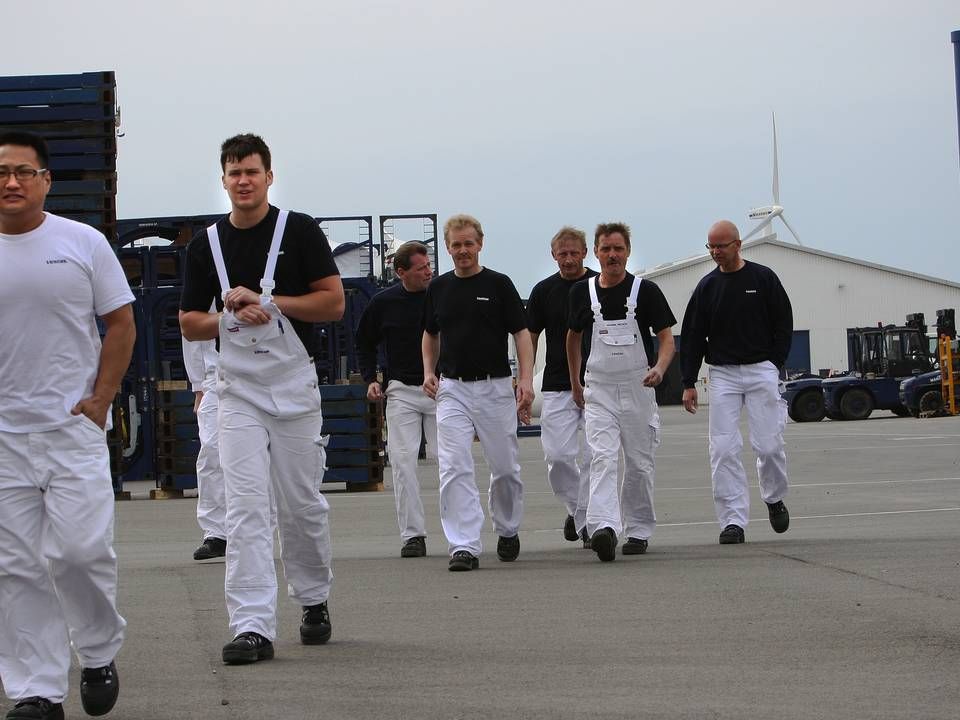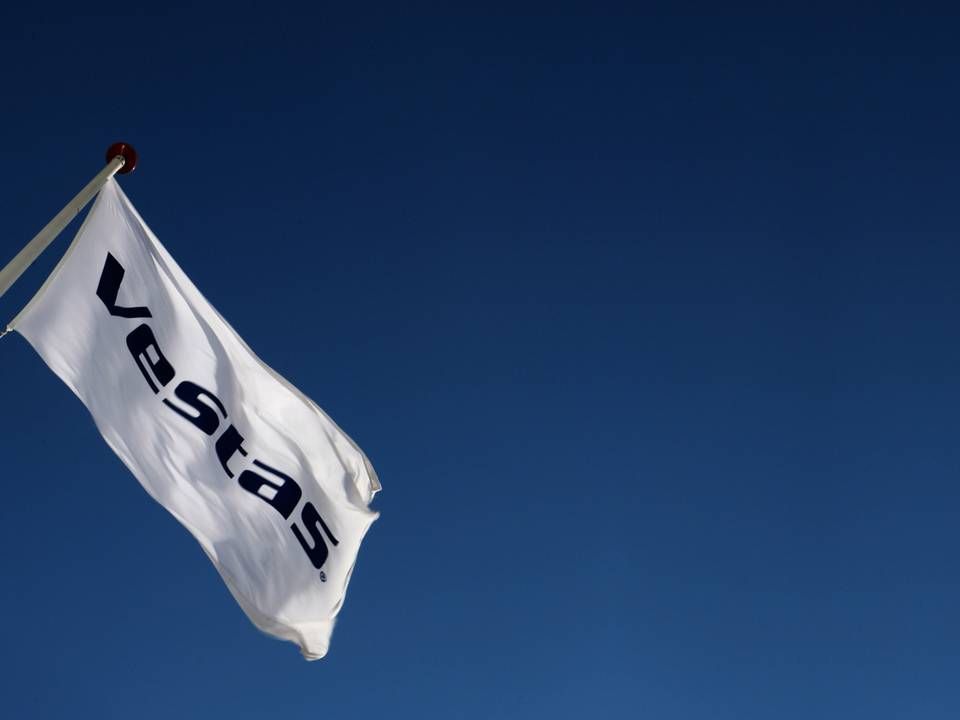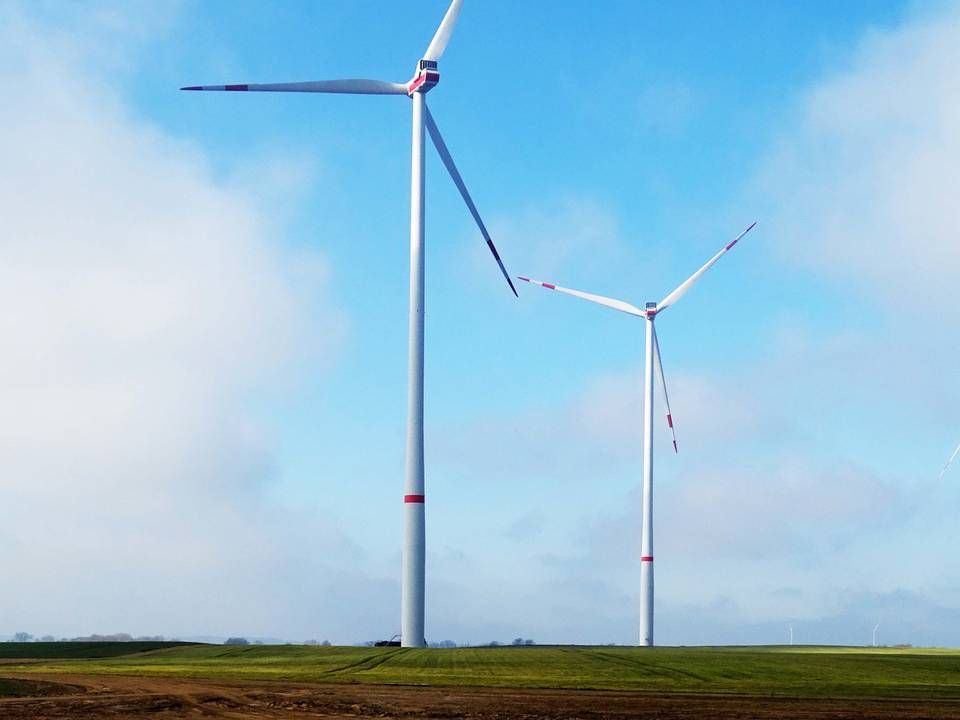Vestas baits UK with 2,000 local jobs

Vestas is planning a big expansion of its production setup in the world's biggest offshore wind market. The OEM says it's mulling an extension of its blade plant on the Isle of Wight and is also exploring prospects for establishing yet another blade factory in Northeastern England.
Moreover, the Danish company has signed a preliminary agreement with subsuppliers including one tower manufacturer to expand its localization footprint.
Altogether, this offensive in Britain could add "almost 2,000 direct jobs", Vestas states.
There's one caveat, though: Vestas says it will only hit the speeder insofar as it wins a sufficient volume of orders in the UK's coming Contracts for Difference (CfD) auction.
The manufacturer declines to specify how much will be needed to trigger these expansions, but the company does tell EnergyWatch that it would involve "several gigawatts". The coming tender, planned for late this year, is expected to result in a build-out of up to 12 GW, which beyond offshore wind will also encompass solar, onshore wind and a smaller pool reserved for less mature technologies such as floating wind.
"If successful in securing enough turbine orders from CfD Allocation Round 4, which includes a strengthened Supply Chain Plan policy for project developers, Vestas is intent on expanding its already sizeable UK footprint," writes Vestas Chief Executive Henrik Andersen in a statement.
"We are in discussions with a number of potential partners and look forward to securing competitive solutions that augment Vestas’ activities in the UK for delivery of future UK projects," he adds.
Tightens supply chain
The question of local content has ranked increasingly high on the UK's policy agenda as of late. According to labor unions, British shipyards and a growing number of lawmakers, Britain has not been adequately rewarded with jobs from being the world's leading offshore wind market. Rather, critics say, developers have frequently opted to use hardware shipped in from countries like China, UAE and Denmark.
As an EU member state, the UK had limited recourse to insist upon altering such matters without the risk of colliding with the EU's anti-trust regulations. Now, though, in the aftermath of Brexit, the nation once again has the mandate to demand locally made components something the government has candidly said will be the price of extending the 2030 offshore wind capacity target to 40 GW.
The final wording of the auction framework is not yet etched in stone, but news has emerged that CfD agreements and thereby the financial basis for future projects can be retracted in the event that developers fail to comply with supply chain planning required for setups rated higher than 300 MW.
Competitors expanding
The prospect of a larger proportion of locally produced content has already made its mark in a number of ways. In the offshore wind sector deal agreed upon last year by the government and industry, a goal was set that 60 percent of content must be British-made by 2030. And this has been evident when looking at the plans of Vestas' direct competitors.
In February, Siemens Gamesa confirmed in a comment to EnergyWatch the company's plans to double the size of its existing blade factory in Hull. The following month, GE announced it will establish a factory in 2023 with nearly 750 employees to manufacture blades for its offshore turbines in Teesside, also in northern England.
However, Vestas might be the only OEM to have two British blade factories for some time yet. Its facility on the Isle of Wight has the potential for expansion to build the 115.5-meter blades needed for the forthcoming 15-MW machine expected to enter serial production as of 2024. But although it's expected that the coming projects will use next-generation turbines, the expansion of the almost 20-year-old factory will depend on order intake.
Selection ongoing
This fact has proved a problem to Vestas in recent years. The offshore turbine maker from which Vestas bought out MHI in the fall is currently delivering the British projects Triton Knoll and Seagreen. But from there, the order book looks quite empty.
This hasn't just increased the distance up to Siemens Gamesa's market-leading position, but also entailed that GE has become the runner-up in only a few years. Not least with the order for the largest project in the latest CfD round, Dogger Bank of 3.6 GW.
The UK's ambitions could, however, provide opportune timing for Vestas' offshore wind comeback.
Partly because of the pure scale of the projects set for establishment in both Britain and Continental Europe over the coming years, which might push OEMs' production capacity to its limit. And partly because the increased British requirements for supply chain plans could make project developers lock on to main suppliers earlier in the process than previously. Probably over the coming months ahead of the tender's commencement.
The latter seemed to be indicated in February. Here, Iberdrola selected Siemens Gamesa as preferred supplier for its East Anglia complex of 3.1, GW, for which the next phase is slated to partake in the coming CfD round. Projects like Vattenfall's Norfolk Vanguard, Ørsted's Hornsea 3 and EDF/Engie's Moray Firth also pre-qualify as participants in the tender.
English Edit: Daniel Frank Christensen & Jonas Sahl Jørgensen
Covid outbreak at Vestas' Ringkøbing plant costs up to EUR 54m in lost revenue
Vestas factory hit by Covid outbreak
First Enventus wind farm operational
Chief analyst: Vestas could lose market share on discontinued turbine model
Related articles
Vestas factory hit by Covid outbreak
For subscribers
First Enventus wind farm operational
For subscribers


















.jpg&w=384&q=75)






